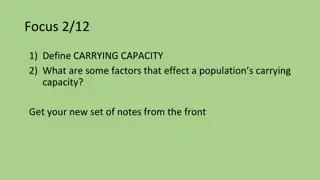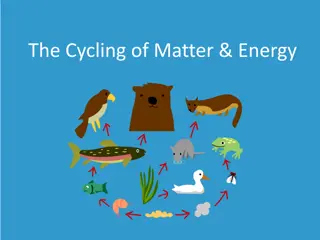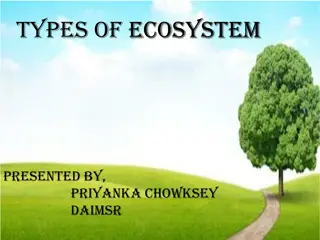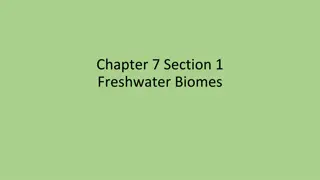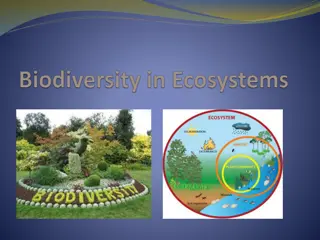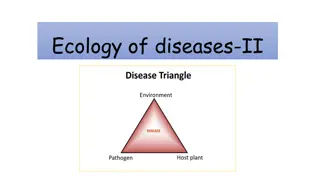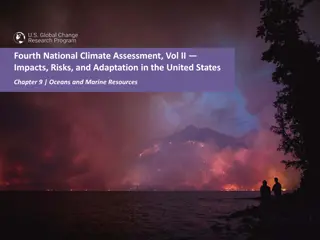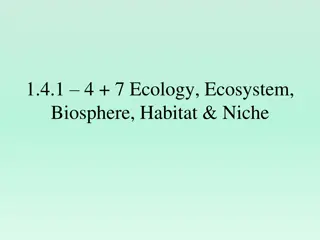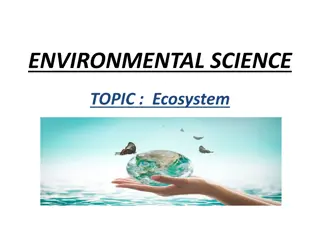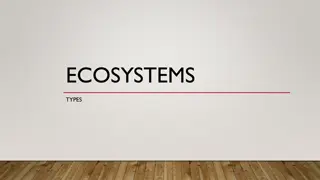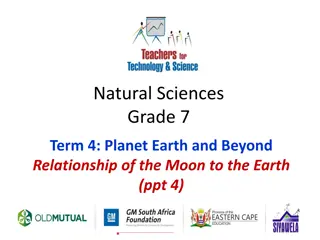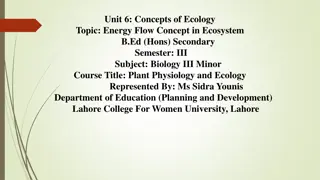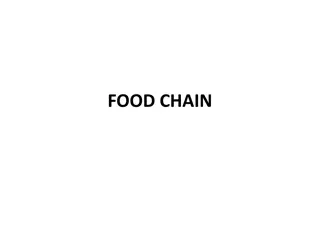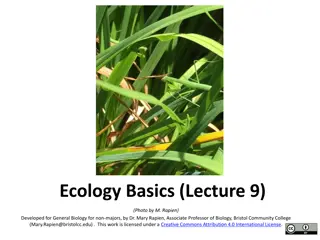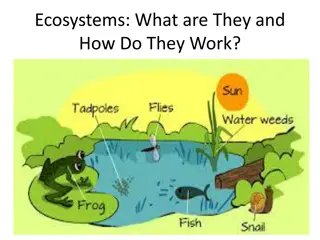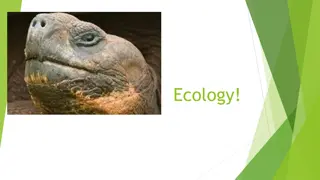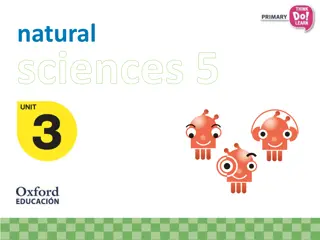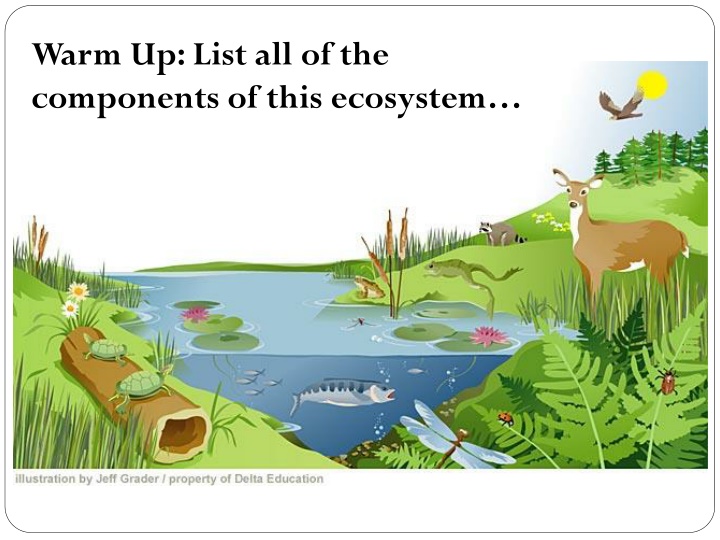
Understanding Ecosystem Components and Energy Flow
Explore the interconnections within ecosystems by learning about biotic and abiotic factors, energy sources, and the flow of energy from producers to consumers. Discover how all living organisms rely on essential components such as energy, nutrients, water, oxygen, and more to thrive in their environments.
Download Presentation

Please find below an Image/Link to download the presentation.
The content on the website is provided AS IS for your information and personal use only. It may not be sold, licensed, or shared on other websites without obtaining consent from the author. If you encounter any issues during the download, it is possible that the publisher has removed the file from their server.
You are allowed to download the files provided on this website for personal or commercial use, subject to the condition that they are used lawfully. All files are the property of their respective owners.
The content on the website is provided AS IS for your information and personal use only. It may not be sold, licensed, or shared on other websites without obtaining consent from the author.
E N D
Presentation Transcript
Warm Up: List all of the components of this ecosystem
Learning Goals and Activities Compare and contrast biotic and abiotic factors in an ecosystem Explain where organisms get their energy Track energy as it flows throughout an ecosystem PowerPoint Videos Homework: Work on notes and homework packet
ECOSYSTEMS: Everything is Connected Ecosystem: all of the organisms living together with their physical environment
Components of an Ecosystem Components of an Ecosystem In order to survive, ecosystems need 5 components: 1. Energy 2. Mineral nutrients 3. Water 4. Oxygen 5. Living Organisms
Biotic and Biotic and Abiotic Abiotic Factors Factors Biotic Biotic Abiotic Abiotic Nonliving Living and once-living
Energy Flow in Ecosystems What is the ultimate source of energy for almost all organisms?
Life Depends on the Sun Photosynthesis: the process by which plants, algae and bacteria use sunlight, carbon dioxide and water to produce carbohydrates and oxygen. 6CO + 6H 0 + solar energy C H O + 6O
From Producers to Consumers Producer (autotroph): organism that makes its own food. Consumer (heterotrophs): organisms that get their energy by eating other organisms. Sunlight Plants Rabbits Coyote
Consumers Primary, Secondary and Tertiary Consumers
Decomposers and Scavengers Break down dead organisms and returns nutrients to soil, water and air. Example: Fungi and Bacteria Scavengers - prevent spread of diseases
Vultures TED Talks The significance of scavengers... http://www.ted.com/talks/munir_virani_ why_i_love_vultures.html
Food Chains and Food Webs Food chains: sequence in which energy is transferred from one organism to the next as each organism eats another organism. Food web: shows many feeding relationships that are possible in an ecosystem.
Food Webs Producers? Primary consumers? Secondary consumers? Tertiary consumers?
Identify 1st, 2nd, 3rd and 4th level consumers in this food web. 18
What type of ecosystems does not receive their energy from the sun? http://www.montereyinstitute.org/noaa/lesson05 .html
Deep-Ocean Ecosystems Chemosynthesis: Bacteria use hydrogen sulfide from hydrothermal vents to make their food. Other underwater organisms eat this bacteria.
Exit Ticket Why might the abundance of life at hydrothermal vents support the idea that there is life beyond Earth?
Thursday, October 15th, 2015 1. Hand in notes and homework questions 2. Unit 2A Quiz on Wednesday 10/21/15 3. Field Trip form 4. Go over test 5. Trophic Levels and Energy Transfer 6. Reminder! Webquest due tomorrow
Learning Goals and Activities Explain how energy is transferred throughout an ecosystem Explain why ecosystems are inefficient Calculate the amount of energy available to each tropic level PowerPoint Worksheet Video
Identify 1st, 2nd, 3rd and 4th level consumers in this food web. 25
Trophic Levels Each step in the transfer of energy through a food web in an ecosystem is a trophic level.
Trophic Levels Each time energy is transferred, some of the energy is lost as heat and less is available to organisms at the next trophic level.
10% Rule 90% of energy is used for everyday function i.e.: body temp., movement 10% is stored and then transferred to the consumer.
0.1% 1% 10% 100%
10% rule in action What trophic level should the bulk of the biomass be in an ecosystem? Producers Example- The Savanna of Africa 100 km2 of grasses (10 km x 10 km) Herd of 1000 wildebeests Pride of 15 lions The higher up the food chain, the less available energy less top-level consumers 4th or 5th level consumers are rare in nature
10% Rule https://www.youtube.com/watch?v=ScizkxMlEOM



